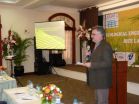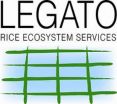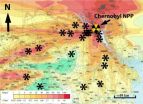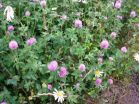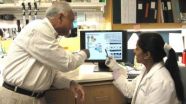(Press-News.org) In a world facing the challenges of climate change, demographic boom and deficit in food resources, the word "sustainable" and the concept behind it become increasingly relevant. Sustainability in the way humanity uses available resources is key to a brighter and greener future.
In the context of sustainable food production, there is a clear need for crop productivity increases and diversification. Optimising rice ecosystem functions and services in Southeast Asia and their stabilisation under future land use and climate change, is the main focus of the project LEGATO 'Land-use intensity and Ecological Engineering – Assessment Tools for risks and Opportunities in irrigated rice based production systems'.
The 3rd annual LEGATO conference, which took place from 10 to 15 March 2014 in Ho Chi Minh City, Vietnam, addresses these pertinent issues of sustainable rice ecosystems in Southeast Asia. The conference aims at looking at various aspects of sustainable rice farming, the latest innovations in this area and their implementation in the socio-cultural, economic and ecological specifications of Southeast Asia, presenting results from LEGATO research and its implementation through the project's case studies.
One of the hot topics was silicon (Si) as a beneficial element for rice plants. A sufficient Si supply can enhance the strength and rigidity of rice plants, improve their resistance against pathogens, the efficiency of fertilizers, and prevent the uptake of toxic metals. Preliminary results reported at the conference showed that the studied rice fields in the Philippines are characterized by high content of plant-available Si, while in Vietnam the content is much lower. The supposed reason for the differences is that the release of Si by mineral weathering is larger in Philippine than in Vietnamese soils.
Variations in plant-available Si within regions might be due to management of rice straw, which comprises more than 70% of total plant Si uptake. Results of interviews with farmers carried out within the project confirmed that some farmers burn the straw after harvest and apply ash to the fields, and some farmers export part of the straw from fields. The export might deplete plant-available Si in soils.
Among the other topics discussed during the conference are the impact of rice management practices on biodiversity and its functional role in rice ecosystems, the natural ways for control of pests, the use of entertainment education in restoration of rice landscape biodiversity, pesticide use and abuse and many others.
Representatives from agricultural and other applied organisations of Thailand, Indonesia and Vietnam (such as the Vietnam Plant Protection Association, and the Thai Agro Business Association) also shared their valuable experience on some good and bad practices on land management and rice farming in SE Asia.
"We make use of the experience of a wide range of stakeholders, reaching from farmers to agricultural extension services, governmental bodies and scientists. We integrate this knowledge and use it as reference for the development of sustainable land use strategies and practices. Taking this integration very seriously is a very unique approach for research-based future sustainability of ecosystems and agricultural production" says the LEGATO coordinator Josef Settele of the Helmholtz Centre for Environmental Research – UFZ, Halle. Germany.
INFORMATION: END
Growing rice the sustainable way: LEGATO holds its 3rd annual conference
2014-03-19
ELSE PRESS RELEASES FROM THIS DATE:
Radiation damage at the root of Chernobyl's ecosystems
2014-03-19
Radiological damage to microbes near the site of the Chernobyl disaster has slowed the decomposition of fallen leaves and other plant matter in the area, according to a study just published in the journal Oecologia. The resulting buildup of dry, loose detritus is a wildfire hazard that poses the threat of spreading radioactivity from the Chernobyl area.
Tim Mousseau, a professor of biology and co-director of the Chernobyl and Fukushima Research Initiatives at the University of South Carolina, has done extensive research in the contaminated area surrounding the Chernobyl ...
Research reveals true value of cover crops to farmers, environment
2014-03-19
Planting cover crops in rotation between cash crops -- widely agreed to be ecologically beneficial -- is even more valuable than previously thought, according to a team of agronomists, entomologists, agroecologists, horticulturists and biogeochemists from Penn State's College of Agricultural Sciences.
"As society places increasing demands on agricultural land beyond food production to include ecosystem services, we needed a new way to evaluate 'success' in agriculture," said Jason Kaye, professor of biogeochemistry. "This research presents a framework for considering ...
Researchers identify potential new therapeutic target for controlling high blood sugar
2014-03-19
DALLAS – March 19, 2014 – A UT Southwestern Medical Center study has identified a new potential therapeutic target for controlling high blood sugar, a finding that could help the estimated 25 million Americans with type 2 diabetes.
Researchers showed that lipid molecules called phosphatidic acids enhance glucose production in the liver. These findings suggest that inhibiting or reducing production of phosphatidic acids may do the opposite.
“This study establishes a role for phosphatidic acids in enhancing glucose production by the liver and identifies enzymes involved ...
NASA sees ex-Tropical Cyclone Gillian affect Indonesia
2014-03-19
The remnants of former Tropical Cyclone Gillian moved out of the Southern Pacific Ocean and into the Indian Ocean only to trigger warnings and watches for part of Indonesia on March 19. NASA's Aqua satellite passed over the stubborn storm and took a visible image of the re-organizing tropical low pressure area.
NASA's Aqua satellite passed over Gillian's remnants on March 19 at 05:30 UTC/1:30 a.m. EDT and the Moderate Resolution Imaging Spectroradiometer or MODIS instrument took a visible picture of the storm. The image showed that the storm appeared to be well-defined, ...
Satellite sees newborn So. Pacific Tropical Storm Mike
2014-03-19
NOAA's GOES-West satellite caught the birth of Tropical Storm Mike in the Southern Pacific Ocean on March 19. Mike's formation has generated warnings for the Southern Cook Islands.
NOAA's GOES-West or GOES-15 satellite captured an infrared image of newborn Tropical Storm Mike in the Southwestern Pacific Ocean on March 19 at 1200 UTC/8 a.m. EDT. Mike appeared to be a compact, rounded tropical storm with bands of thunderstorms wrapping into it. NOAA's GOES-West satellite sits in a fixed orbit in space capturing visible and infrared imagery of all weather over the western ...
The scientific legacy of colonialism in Africa
2014-03-19
Colonial legacy has a significant impact on scientific productivity across the continent of Africa, according to a study by researchers at the University of Lomé, in Togo. Writing in the International Journal of Education Economics and Development, the team suggests that Africa performs relatively poorly compared with other regions of the world. Moreover, their analysis of data for the period 1994 to 2009 shows that African nations with a British colonial legacy are much more productive than countries with French or other history. This, the team adds, correlates with superior ...
French Alps Property Market Witnesses a Surge in Interest From International Buyers
2014-03-19
Demand for property in the Alps is on the increase with a growing number of foreigners looking to invest in resorts such as Chamonix, according to new figures.
Property agents in Chamonix, a resort in France's Savoie region and one of the key Alpine winter destinations, are reporting soaring property demand, much of which is being driven by the international buyers. The real estate agents also revealed an increase in property prices of more than eight per cent during 2013. This surge in interest can be attributed to the infrastructure upgrades in Chamonix and also to ...
Catching the early spread of breast cancer
2014-03-19
DALLAS, March 19, 2014 — When cancer spreads from one part of the body to another, it becomes even more deadly. It moves with stealth and can go undetected for months or years. But a new technology that uses "nano-flares" has the potential to catch these lurking, mobilized tumor cells early on. Today, scientists presented the latest advances in nano-flare technology as it applies to the detection of metastatic breast cancer cells.
The report was one of more than 10,000 at the 247th National Meeting & Exposition of the American Chemical Society (ACS). The meeting is taking ...
Noninvasive colorectal cancer screening tool shows unprecedented detection rates
2014-03-19
ROCHESTER, Minn. — March 17, 2014 — Results of a clinical trial of Cologuard show unprecedented rates of precancer and cancer detection by a noninvasive test. The detection rates are similar to those reported for colonoscopy. The results were published in the March 20 issue of the New England Journal of Medicine (NEJM). Cologuard was co-developed by Mayo Clinic and Exact Sciences.
Cologuard, is a noninvasive sDNA test for the early detection of colorectal precancer and cancer. The Cologuard test is based on a stool sample that is analyzed for DNA signatures of precancer ...
New, noninvasive, stool-based colorectal cancer screening test
2014-03-19
(New York, March 19, 2014) – A new, non-invasive, stool-based screening test detected 92% of colorectal cancer (CRC), according to a multicenter trial published online today in the New England Journal of Medicine. The new test, which is not yet approved by the FDA, allows patients to collect a sample at home without the need for bowel preparation or diet restrictions.
Unlike other available stool-based CRC screening tests, which rely solely on detecting occult blood in the stool, this new test, called "Cologuard", developed and patented by Exact Sciences, detects both ...
